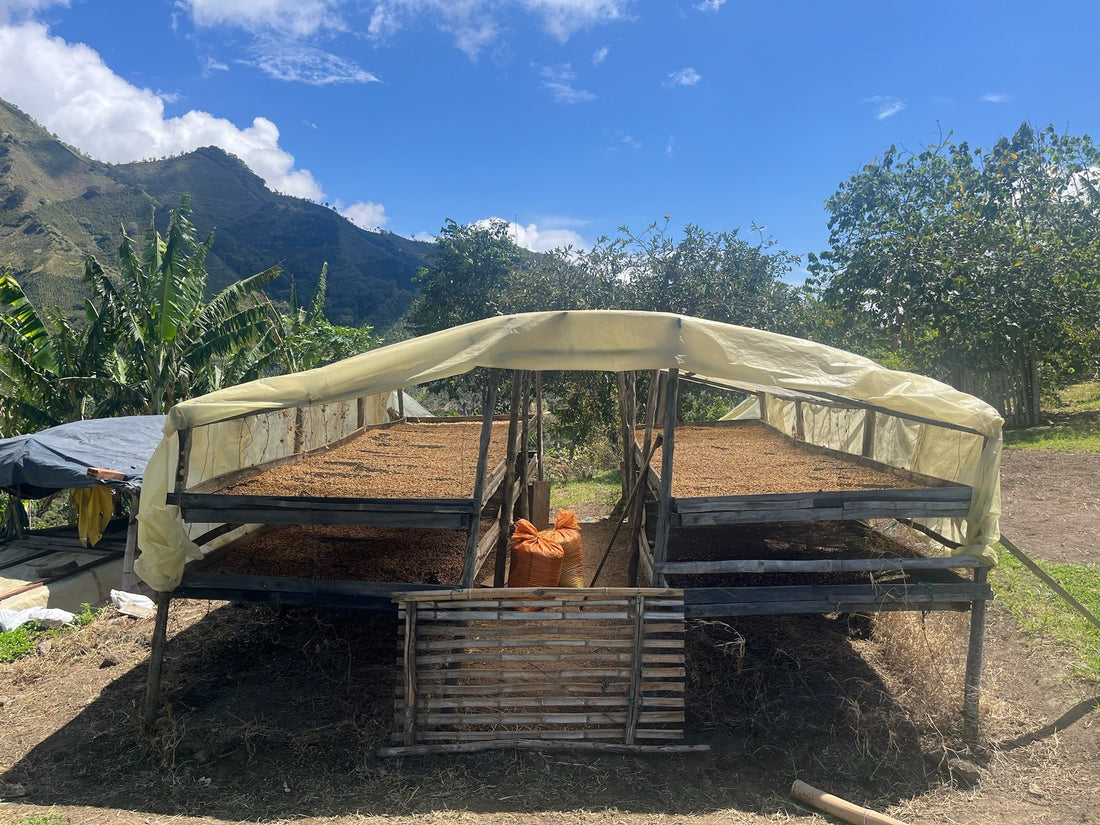
Natural, Washed & Honey! Coffee Processes
Share
In coffee production, the washing and drying processes are critical steps that influence the final flavor of the beans. One common method is the wet process (washed process), where coffee cherries are first pulped to remove the outer skin, then fermented in water tanks for 12 to 48 hours to break down the mucilage—a sticky layer surrounding the bean. After fermentation, the beans are thoroughly rinsed with clean water to remove any remaining mucilage, resulting in a cleaner, brighter flavor profile with higher acidity. This method is widely used for high-quality Arabica beans, especially in regions like Colombia and Kenya, as it highlights the bean’s natural characteristics.
Another approach is the dry process (natural process), one of the oldest methods, where whole coffee cherries are spread out to dry in the sun immediately after harvest, without removing the skin or mucilage. The cherries are laid on patios, raised beds, or mats and turned regularly for even drying, which can take 2 to 4 weeks depending on weather conditions. As the cherries dry, the fruit ferments around the bean, imparting sweet, fruity, and sometimes funky flavors to the coffee. This method is common in regions with limited water access, like Ethiopia and Brazil, and is prized for producing complex, full-bodied coffees.
The semi-washed process (pulped natural or honey process) blends elements of both wet and dry methods. Here, the outer skin of the cherry is removed using a pulper, but some or all of the mucilage is left on the bean during drying. The beans are then spread out to dry in the sun, often on raised beds, for 10 to 20 days, with the drying time and mucilage level affecting the flavor—ranging from sticky “honey-like” sweetness to subtle fruitiness. Popular in Costa Rica and Indonesia, this method balances the clarity of washed coffee with the body and sweetness of natural coffee, offering a versatile taste profile.
Finally, drying itself can take different forms depending on the process and region. In both natural and semi-washed methods, sun drying is traditional, with beans spread on concrete patios, raised African beds, or tarps, requiring manual turning to prevent mold and ensure even moisture loss (typically reducing to 10-12% moisture content). Alternatively, mechanical drying uses large drum or tray dryers with controlled heat and airflow, speeding up the process to as little as 24-48 hours and offering consistency in humid climates. While sun drying enhances flavor complexity, mechanical drying is practical for large-scale production, as seen in some Brazilian and Vietnamese operations, though it may sacrifice some nuanced tastes.
